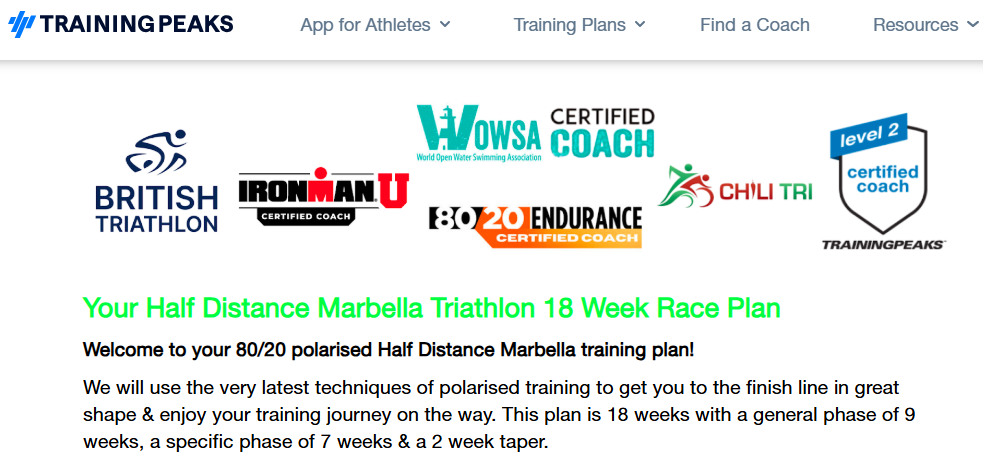How to be a Green Eco-Friendly Triathlete
 Karen Parnell
May 10, 2022
Karen Parnell
May 10, 2022

How to be a Green Eco-friendly Triathlete
COP (Conference of the Parties focssed on climate change) was held recently and we have heard about how humans are having a negative impact on the world we life in. We know we all need to make changes to save our planet and minimise our impact on the environment, every little change will make a cumulative difference.
Here are some ways we as triathletes can reduce our impact but also still enjoy the sport we love.
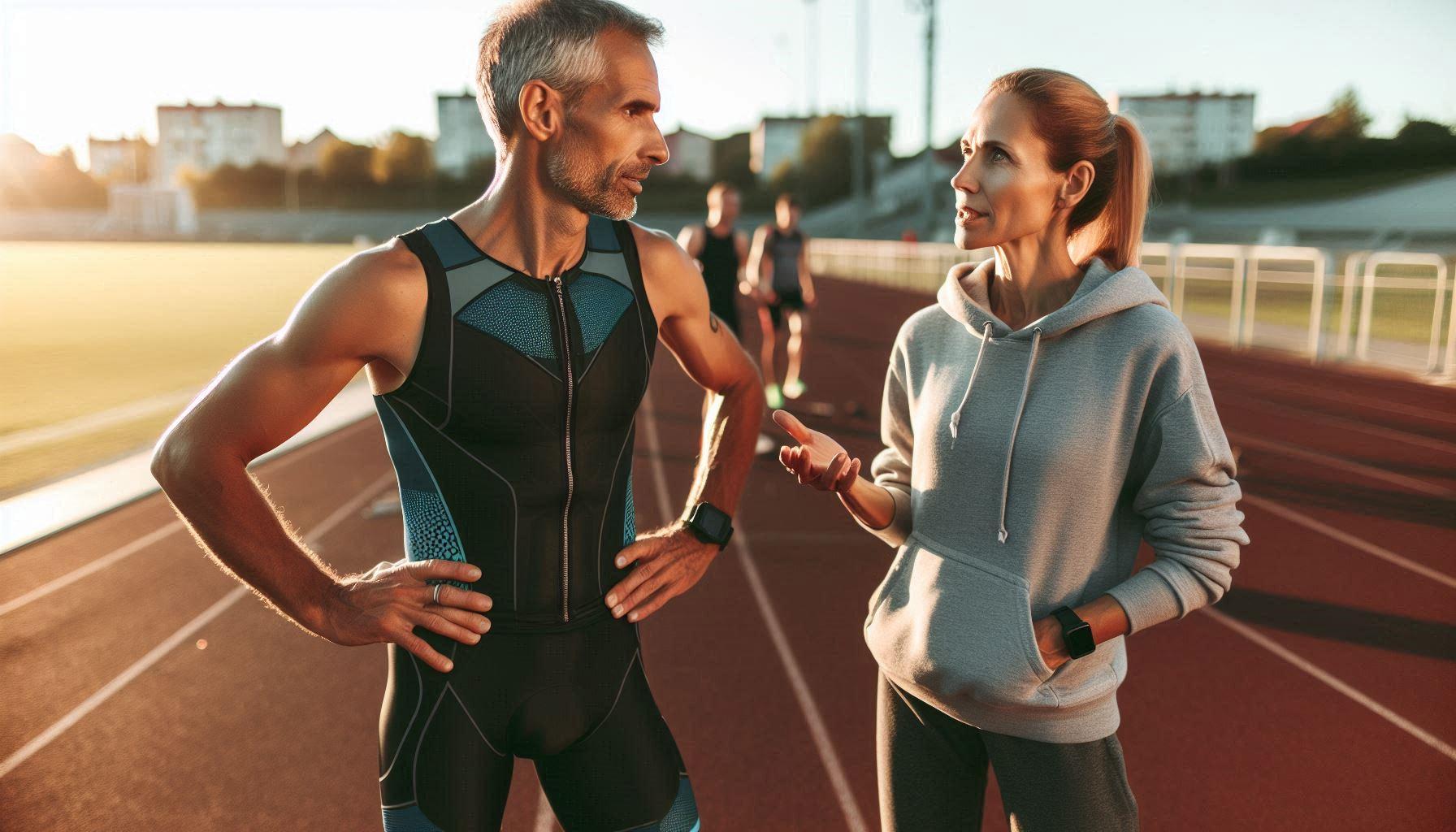
Get your FREE Guide to Running Technique and Speed
Consider Buying Second Hand Technology
A GPS watches birth is the most contaminating part of its life cycle: around 80% of each device’s carbon footprint is generated at the manufacturing stage. This is due to the mining, refining, transport and assembly of the dozens of chemical elements that make up cutting-edge tech: iron for the speakers and microphones in the latest watches to answer calls, aluminium and magnesium for the frames and screen, copper, silver and gold for the electronic circuits, graphite and lithium for the batteries, silicon for the processor, and lead and tin for the solder joints. As you can see a new GPS watch uses lots of rare earth metals.
I recently needed to upgrade my watch for work and looked at the various specs and found that the older Fenix 5 plus had the features I needed so I bought a second hand device on Rebuy and it´s perfect for my needs. My old Fenix 3 was sold on to another triathlete so completed the circle. Maybe consider buying second hand electronics the next time you need new tech?

Get your FREE Swim Workouts for Triathletes Book
Use Paperless Training Plans
This is an easy change to make and avoids printing out your training plan before every session. Most training plans can be delivered direct to your phone or sports watch as a structured session with all of the details your need train without the need to use extra materials - just follow along on your device. No need to print out sessions!
My training plan are available on both TrainingPeaks and Final Surge.
Get your FREE 16 week Sprint Triathlon Training Plan
Seek out Green Races
Green races are those that try to minimise their impact on the environment such as:
- Recycling of cardboard, paper, metal, plastic and glass
- Food waste composted or donated to local charities
- Reduction of how much waste one participant creates
- Use of alternative fuels to power race vehicles and transport athletes
- Consumption of local foods
Take a look at the race listing before you book to see if they are taking the above measures and others to make their races sustainable. There is a new organiation called Racing for Sustainability that helps race directors become more sustainable.
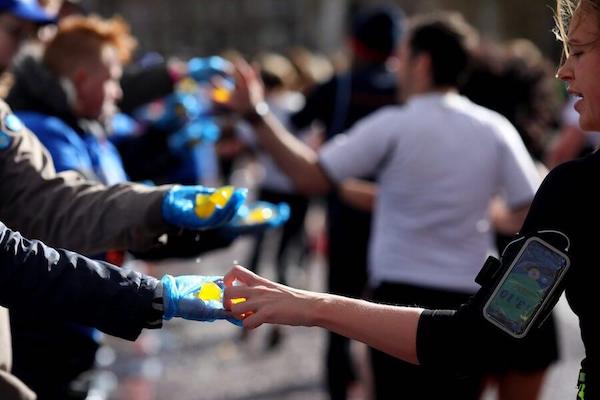 Ooho Lucozade sachets handed out at the London Marathon to reduce waste on the course
Ooho Lucozade sachets handed out at the London Marathon to reduce waste on the course
Download your FREE 10k Running Plan
Recycle Your Old Kit and Tech
Being realistic sports clothing does wear out, especially swimwear which decays in chlorine swimming pools for example. There are organisations that do take your old kit and recycle or reuse it such as Sea & Stream. Send your old and weary swim hats and goggles to outdoor swimming shop Sea & Stream and you will receive 10% discount off your next purchase.
Items in good condition are sent to SwimTayka, which provides free swimming lessons to underprivileged children living near waterways, or Cool Bathing, who make swim hats. Those in poor condition will be recycled using specialist providers.
If you are in the UK you can recycle your old swimming goggles by sending them to the Outdoor Swimming Society (OSS).
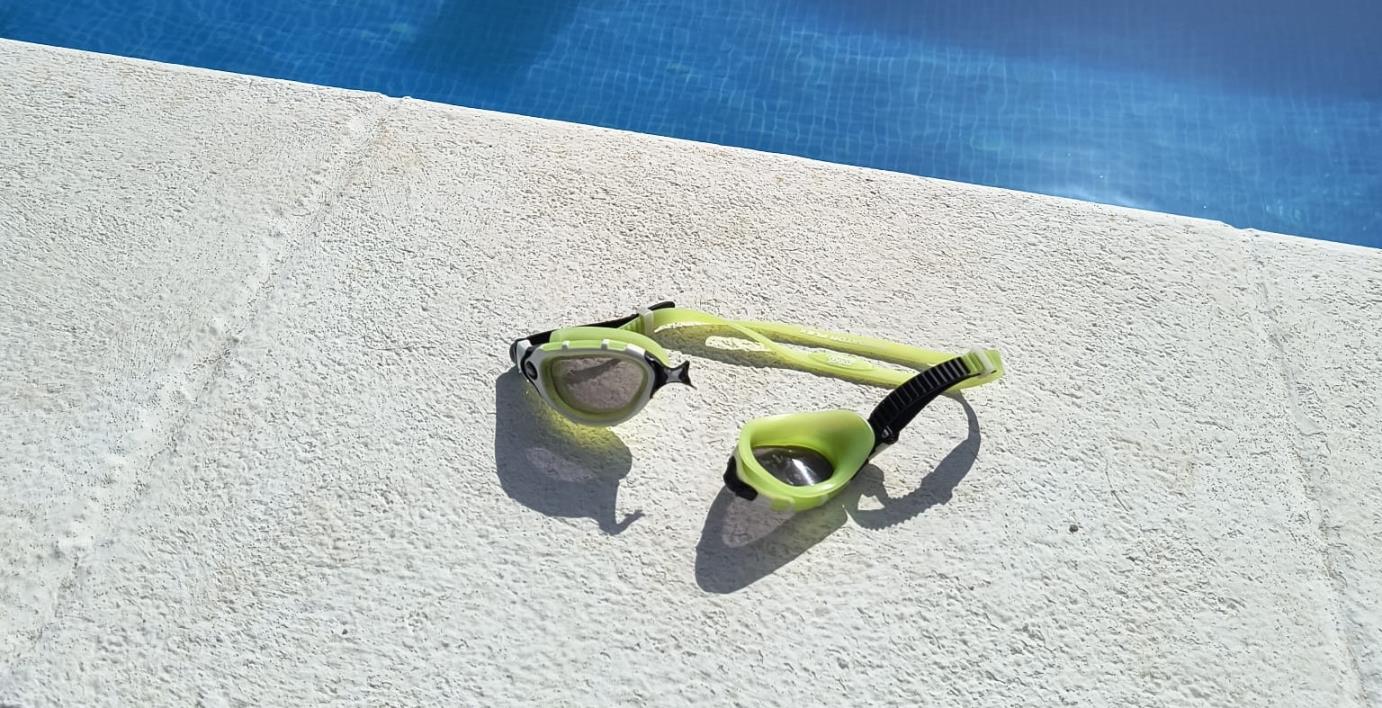
My Zoggs Predator Felx Goggles broke after 10 years! They will be re-cycled and given a new life
Get your FREE Swim Workouts for Triathletes Book
Remember to make sure you take your waste to a good re-cycling centre and put your waste in the right bins. I am careful to with my CO2 canisters for example. They are made of 100% steel so putting them in the right bin will make sure they are totally recycled.
When it comes to triathlon tech then consider re-cycling or re-purposing it. TechRadar wrote a great blog about what to do with an old Garmin watch and covered:
- Keep it as a backup - Garmin support their products for many years and also allow you to connect to multiple devices so this is a good option
- Use it as a bike computer - I thought this was genius! So I've already dug out my old Garmin Fenix 3 and have done just that. You can get a kit from Garmin called the QuickFit® to do this.
- Donate it to a charity or take it to a charity shop or to someone in your club that can't afford one.
- Sell it on to another athlete
- Recycle it via a shop or recycling centre that can handle produces with the lithium battery etc. Garmin can help you find a centre by completing their WEEE request form.
WEEE stands for ‘Waste Electrical and Electronic Equipment’, which is practically any household or non-household end-of-life equipment that has a battery or plug.

Garmin QuickFit® Quarter-turn Bike Mount
Get your FREE 31 Structure Indoor Cycling Sessions and Training Plan
Use Reef Safe Swimming Products
Look for reef safe products when you go open water swimming how ever little you use. For example a product like reef safe Cressi anti-fog spray for your goggles. You have heard swimmers saying baby shampoo is great but it is not a great product for the environment and is ironically not any cheaper! I have found that Cressi anti-fog works really well at keeping goggles fog free for even the coldest sea swim plus it extends the life of your goggles. I have had the same pair of Zoggs predator flex for 6 years and I used them in the sea yesterday without issues, after spraying with cressi anit-fog.
Another product that has no impact on open water is Safe Sea sun screen. It is really effective in keeping your skin safe, doesn´t come off in water it also protects against swimmers itch, jelly fish stings and sea lice.
Using Vaseline (a petroleum based product) is not only bad for the environment but can degrade your wetsuit. I use sea safe anti-chafe products such as Pee Safe stick but I appreciate that this may not be available everywhere so seek out local natural alternatives or even coconut or olive oil.
Also consider repairing your wetsuit if it is damaged rather than replacing it with a new one. If you do need to purchase a wetsuit it's worth checking to see what it is made from as some wetsuits are better than others when it comes to their green credentials.
We can learn a lot from divers and surfers who have been mindful of their impact on the sea for many years so if you live near the sea it's well worth a talking to them about the products they use.
Another product that is damaging our seas is sunscreen and there is a Black Flag scheme which awards a black flag to water that has levels of pollution that is damaging to wildlife. A beach near me have just been awarded one for sunscreen pollution! So it's worth looking at ocean safe products and there's a list here.
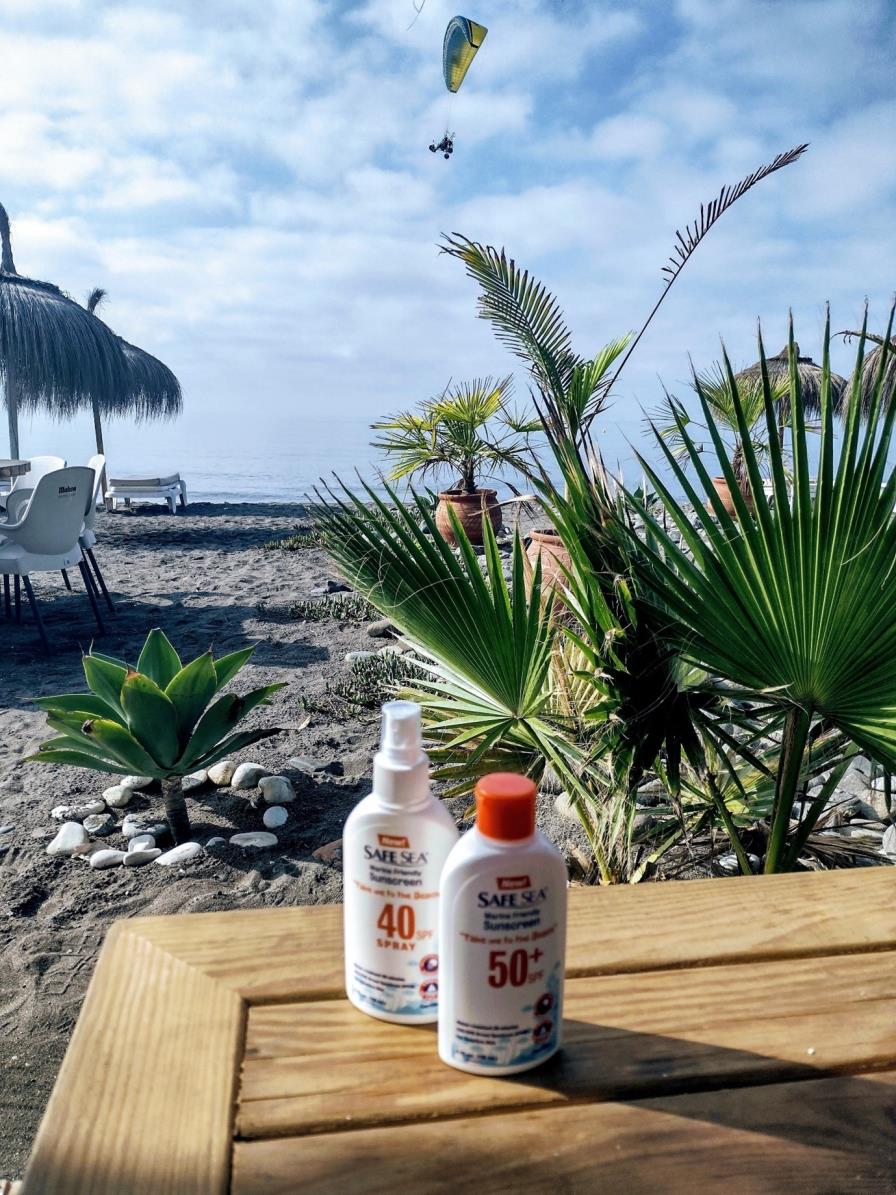
Get your FREE open water swim workouts book
Choose Local Races
This is an easy one to reduce your carbon footprint so you don´t need to drive far or fly to an event.
Train Locally
Do you find yourself driving to your favourite running, cycling or swimming spot? Maybe consider cycling there or finding routes literally on your door step. It´s not always practical but just changing one session a week will make a difference.
Reusable & Compostable Water Bottles
Most athletes are already doing this but it´s worth checking your can recycle your bottle or that it´s made from recycled plastic if you need a new one.
In May 2022 Cannondale announced a fully compostable water bottle for cyclists and triathletes. Cannondale makes the new 100% compostable bottles from plant-derived materials. The bite valve, cap, and bottle body are all completely compostable and free of plasticizers, heavy metals, and BPAs. So this bottle is better for the environment and healthier for people drinking from it.
According to Cannondale, these new bottles will decompose within 3 months in an industrial compost system once exposed to micro-organisms, heat, and humidity.
This claim is certified by European Compost Standards EN13242. Without an industrial compost system, as in a homemade compost bin, the bottles should decompose within 10-12 months. Keep an eye on the Cannondale website for more information about when they will available to purchase.
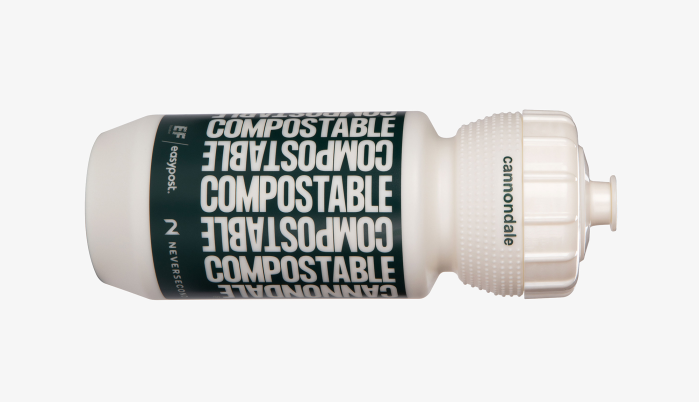
Cannondale Compostable Water Bottle
Get your FREE guide to Strength and Conditioning
Sports Clothing Made from Recycled Material
One of my athletes needed a dry robe for open water swimming in the colder months so I had heard about one from Primark. I went to check it out for them to see if it would do the job and I was happy to report back that not only was it great quality but also made from recycled plastics. A win-win!
Lots of sports clothing manufacturers are starting to produce products made from recycled fabrics such as Primark but also Reprive, vilebrequim, Halaxhalla and trigirl. Some wetsuit manufacturers like Madwave are starting to use recycled fabrics and water based glues.
Rubymoon is an ethical brand and makes swimsuits made from ECONYL® yarn, a 100% regenerated nylon fibre made from nylon waste otherwise polluting the Earth, like fishing nets, fabric scraps, carpet flooring and industrial plastic rescued from all around the world.
I use shoes from TropicFeel which are made from used plastic bottles and are great from walking, running and you can swim in them! Use this link to get 10% off.
My TropicFeel Jungle shoes I wear for walking, running and swimming!
Get your FREE open water swim workouts book
Conclusion: Becoming an Eco-Friendly Athlete
As you can see a small few changes can make a difference to reduce your carbon footprint as a triathlete. These range from TropicFeel shoes made from recycled bottles for swimming, hiking and running, reef safe products from Cressi to seeking out green races and recycling your old kit.
Would you like a free training plan? Claim your free plan or e-book.
Karen Parnell is a Level 3 British Triathlon and IRONMAN Certified Coach, 8020 Endurance Certified Coach, WOWSA Level 3 open water swimming coach and NASM Personal Trainer and Sports Technology Writer.
Karen is currently studying for an MSc in Sports Performance Coaching at the University of Stirling.
Need a training plan? I have plans on TrainingPeaks and FinalSurge:
I also coach a very small number of athletes one to one for all triathlon and multi-sport distances, open water swimming events and running races, email me for details and availability. Karen.parnell@chilitri.com
Get your FREE Guide to Running Speed and Technique
Get your FREE Swim Workouts for Triathletes E-book
Get your FREE Open Water Swimming Sessions E-Book
.png)
The Eco Friendly Triathlete Infographic
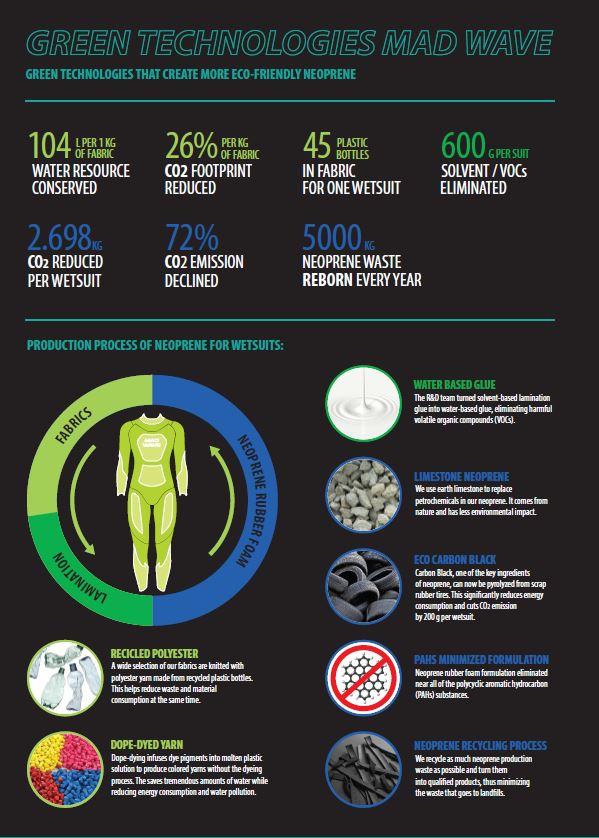
FAQ - Sustainable Swimming, Cycling and Running products for Triathletes
What are recycled swimming, cycling, and running products?
Recycled swimming, cycling, and running products are items made from recycled materials, such as old fishing nets, plastic bottles, and discarded fabric scraps. These products aim to reduce waste and lessen the environmental impact of athletic activities.
What are some examples of recycled swimming, cycling, and running products?
Examples of recycled products include swimwear made from recycled fishing nets, cycling jerseys made from recycled plastic bottles, and running shoes made from recycled rubber and fabric scraps.
Why should I use recycled swimming, cycling, and running products?
Using recycled products helps reduce waste and preserve natural resources. Additionally, some products may be more environmentally friendly in terms of their manufacturing process and the materials used.
Are recycled products less durable than non-recycled products?
Not necessarily. Many recycled products are designed to be just as durable and high-quality as non-recycled products.
Are recycled products more expensive?
It depends on the specific product and brand. Some recycled products may be more expensive than non-recycled products due to the higher cost of sourcing and manufacturing recycled materials. However, prices vary widely, and some recycled products may be competitively priced or even more affordable than non-recycled options.
Where can I find recycled swimming, cycling, and running products?
Many sporting goods stores and online retailers now offer recycled products. Look for products made by brands that prioritize sustainability and environmental responsibility.
How can I dispose of my old swimming, cycling, and running gear responsibly?
If your gear is still in usable condition, consider donating it to a local charity or athletic organization. If it is no longer usable, check with your local waste management facility to see if they offer recycling programs for sports equipment.
How can I tell if a product is truly made from recycled materials?
Look for labels or tags that indicate the product is made from recycled materials. Many brands will also provide information on their website about their sustainability practices and the materials they use.
What brands have sustainable credentials for swim, bike and run products?
Patagonia is a well-known outdoor apparel brand that uses recycled materials in many of their products, including their swimwear and running gear. They also prioritize sustainable manufacturing practices and are committed to reducing their environmental impact.
Rothy's is a brand that makes sustainable and stylish shoes and accessories from recycled plastic water bottles. While they don't currently offer swimming or cycling gear, they do have a range of running shoes and activewear.
Speedo is a swimming brand that offers a range of swimwear made from recycled materials, including plastic bottles and fishing nets. They also have a range of eco-friendly products, such as their Eco range of swimwear made from recycled polyester.
Ternua is a Spanish outdoor clothing and equipment brand that places a strong emphasis on sustainability. They use a range of recycled and eco-friendly materials in their products, including recycled polyester and organic cotton. They also have a range of sustainable cycling gear.
Adidas is a global brand that has made a commitment to sustainability and reducing their environmental impact. They have a range of sustainable products, including running shoes made from recycled materials and cycling gear made from recycled polyester.
Trek, one of the world’s biggest bicycle brands, recently released its sustainability report for 2021. Remarkably, this appears to be the first time a major bike company has published such a document.
Tropicfeel is a brand that aims to make sustainable and versatile travel gear. They offer a range of products, including backpacks, shoes, and swimwear, made from eco-friendly materials such as recycled plastic bottles and vegan leather. Tropicfeel's sustainability efforts include using sustainable materials, minimizing waste, and reducing their carbon footprint. For example, their shoes are designed to be lightweight and multifunctional, allowing travellers to pack less and reduce their environmental impact.
#recycling #reefsafe #greenathletes #greentriathletes #triathlon #chilitri #carbonfootprint #traithlontrainingplans #runningtrainingplans #swimmingtrainingplans

